Caryn
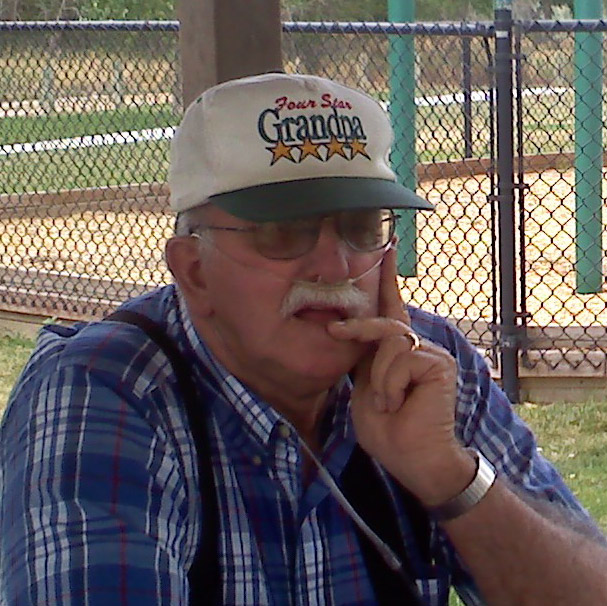 My Uncle Jack McDaniels was such a fun man. He was a jokester at heart, and he loved spending time with his family. On of the things he was very interested in was history. He loved to share that with his kids and even had a number of history books that reflected the stories he shared. I wish many of us had known about his knowledge of Casper history.
My Uncle Jack McDaniels was such a fun man. He was a jokester at heart, and he loved spending time with his family. On of the things he was very interested in was history. He loved to share that with his kids and even had a number of history books that reflected the stories he shared. I wish many of us had known about his knowledge of Casper history.
Uncle Jack and Aunt Bonnie had a beautiful place east of Casper, along the Platte River. There they raised their kids, Cindy and Michael. Uncle Jack loved tp teach Michael about cars and car racing. The two of them spent many hours tinkering on cars in the garage. It’s a great pastime for a father and son.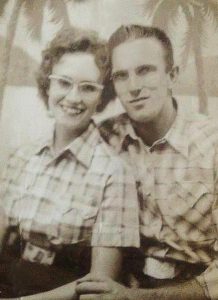
Uncle Jack loved the outdoors, and all outdoor sports. He loved to go hunting and fishing, as well as taking his family camping. That seemed to be a common thing among the men in our family. I’m sure that is why Uncle Jack fit in so well in our family. All of the aunts and uncles loved Uncle Jack. I can see why, because all of his nieces and nephews loved him too. He was sweet and funny, with a great sense of humor. My husband, Bob and I usually ran into Aunt Bonnie and Uncle Jack at the normal weekly hangout…Walmart. That seems to be the place we see most of our friends and family. I guess that’s what happens when you grow up and start adulting. A “date” is the weekly trip to the grocery store. I miss those times. I always looked forward to them. Today would have been my Uncle Jack’s 82nd birthday. Happy birthday in Heaven Uncle Jack. We love and miss you very much.
 As another child turns 16, so another child is behind the wheel. My grand-nephew, Easton Moore has reached that milestone year of his life. Easton is the younger of my niece, Machelle Moore and her husband, Steve. It’s hard for me to believe that Easton is 16 years old already. It seems like just yesterday that he was born. That is the way most parents feel about the time their child turns 16. Easton will be getting his license soon. They have to have 50/hours of day and 10/hours of night driving to do before they can get their license. He is almost there. Something new has helped Easton, that his brother, Weston didn’t have the use a driving app. They didn’t have that when Weston was learning. This years lack of snow has hampered Easton’s snow driving experience, but the past two weeks has made up for the winter’s lack of snow,
As another child turns 16, so another child is behind the wheel. My grand-nephew, Easton Moore has reached that milestone year of his life. Easton is the younger of my niece, Machelle Moore and her husband, Steve. It’s hard for me to believe that Easton is 16 years old already. It seems like just yesterday that he was born. That is the way most parents feel about the time their child turns 16. Easton will be getting his license soon. They have to have 50/hours of day and 10/hours of night driving to do before they can get their license. He is almost there. Something new has helped Easton, that his brother, Weston didn’t have the use a driving app. They didn’t have that when Weston was learning. This years lack of snow has hampered Easton’s snow driving experience, but the past two weeks has made up for the winter’s lack of snow, 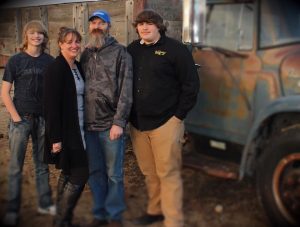 so Easton is catching up fast. Machelle tells me that Easton is really improving with practice. Strangely, Powell, Wyoming, where Easton lives has just now started plowing the streets. Shocking for Wyoming.
so Easton is catching up fast. Machelle tells me that Easton is really improving with practice. Strangely, Powell, Wyoming, where Easton lives has just now started plowing the streets. Shocking for Wyoming.
Easton signed up for a welding course at the college that he is super excited about. The Boces program, which stands for the Board of Cooperative Educational Services. Has made many college classes available to high school students. It’s a great way to give these kids a chance to get ahead in their college education, and to make sure that the course of study is the career  move they want to make. Easton is still is not sure what he wants to do after high school, but taking that class might open some doors for him.
move they want to make. Easton is still is not sure what he wants to do after high school, but taking that class might open some doors for him.
Easton is actively looking for a job, so he can save for a car. He has a stack of applications to fill out and hand back in. Easton is motivated to help whenever anyone needs help. He just jumps up and just does it!! That says a lot about his character. Today is Easton’s 16th birthday. Pretty soon we will all need to get off the sidewalks, as a new driver hits the road. Happy birthday Easton!! Have a great day!! We love you!!
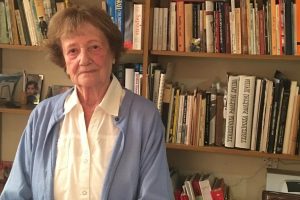 I read a book the other day, called “The Librarian of Auschwitz.” It is a true story about a woman named Dita Polachova , who at the age of 14 years was imprisoned at Auschwitz. I was moved by the sacrifices the people in her network made, as well as the many people I have read about in the past. We, in America, don’t often understand the need to sacrifice our own safety, and many people wouldn’t do it even if it was necessary. Dita was one of those people who would.
I read a book the other day, called “The Librarian of Auschwitz.” It is a true story about a woman named Dita Polachova , who at the age of 14 years was imprisoned at Auschwitz. I was moved by the sacrifices the people in her network made, as well as the many people I have read about in the past. We, in America, don’t often understand the need to sacrifice our own safety, and many people wouldn’t do it even if it was necessary. Dita was one of those people who would.
She was in charge of eight books that someone had smuggled into Auschwitz, the first sacrifice. It was something that could have cost the smuggler his life, but he saw value in the ability to get the books into the hands of the family camp, and the children’s school at Auschwitz. The family camp, and the coordinated children’s school was unique to Auschwitz. Most camps did not allow families to stay together. In fact, most of the children were killed upon arrival at the camps. The family camp and the children’s school were the 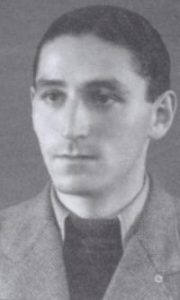 brainstorm sacrifice Freddy Hirsch, who was a Jewish athlete, one of the great runners. He was almost impossible to beat. I don’t know if that was what gave him some pull or not, but he made a sacrifice that turned out to be the ultimate sacrifice. Fredy Hirsch would not survive Auschwitz. It wasn’t because the books were found, but rather that the Nazis were taking away the family camp and children’s school. He took his own life. He assumed that the precious books would be lost, but he had underestimated Dita, who managed to get the books back in their hiding place, where they were not found by the Nazis.
brainstorm sacrifice Freddy Hirsch, who was a Jewish athlete, one of the great runners. He was almost impossible to beat. I don’t know if that was what gave him some pull or not, but he made a sacrifice that turned out to be the ultimate sacrifice. Fredy Hirsch would not survive Auschwitz. It wasn’t because the books were found, but rather that the Nazis were taking away the family camp and children’s school. He took his own life. He assumed that the precious books would be lost, but he had underestimated Dita, who managed to get the books back in their hiding place, where they were not found by the Nazis.
Dita outlived the Nazi reign of terror and went on to lead a happy life, despite the memories that would haunt her for the rest of her life. She married Arvid Harnack, an author, who with the writer Adam Kuckhoff and his wife Greta, who with Mildred Fish-Harnack brought together a discussion circle which debated political perspectives on the time after the National Socialists’ expected downfall or overthrow. From these meetings arose what the Gestapo called the Red Orchestra resistance group.
The Red Orchestra, Die Rote Kapelle in German, or the Red Chapel as it was known in Germany, was the name given by the Gestapo to anti-Nazi resistance workers during World War II. The members included friends of Harro Schulze-Boysen and Arvid Harnack in Berlin, as well as groups working independently of these intelligence groups, working in Paris and Brussels, that were built up on behalf of Leopold Trepper on behalf of the Soviet Main Directorate of State Security. The Red Orchestra was neither 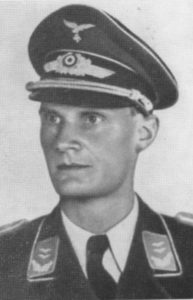 directed by Soviet communists nor under a single leadership but a network of groups and individuals, often operating independently contrary to legend. About 400 members are known by name at this time. They printed illegal leaflets hoping to incite civil disobedience, helped Jews and opposition escape the regime, documented the crimes of the Nazi regime, and forwarded military intelligence to the Allies. The public perception of the “Red Orchestra” is characterized by the transfigurations of the post-war years and the Cold War.
directed by Soviet communists nor under a single leadership but a network of groups and individuals, often operating independently contrary to legend. About 400 members are known by name at this time. They printed illegal leaflets hoping to incite civil disobedience, helped Jews and opposition escape the regime, documented the crimes of the Nazi regime, and forwarded military intelligence to the Allies. The public perception of the “Red Orchestra” is characterized by the transfigurations of the post-war years and the Cold War.
The network of people willing to risk their own lives during the Holocaust years was extensive. From Jews who risked their lives to make life better in and out of the camps, to non-Jews who risked their lives to fight against the atrocities of the Nazi Regime and the Third Reich. These were brave people who knew that bravery isn’t about being fearless, but rather being brave despite the fear. Their stories deserve to be told. They deserve recognition, because in the face of the worst odds, they took action anyway. That is true bravery, and true sacrifice.
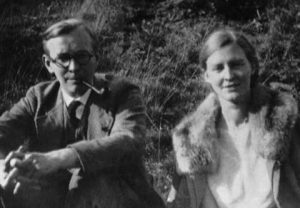 Mildred Fish was an American-German literary historian, translator, and later, a German Resistance fighter in Nazi Germany. They fell in love and married, moving to Germany right after. She met her future husband, Arvid Harnack in 1926. Arvid was a grad student at the University of Wisconsin-Milwaukee, and a Rockefeller Fellow from Germany. In Germany, Mildred worked in education and Arvid secured a position with the Reich Economic Ministry. Throughout the 1930s, Mildred and Arvid, became increasingly alarmed by Hitler’s rise to power. They could see that he had ulterior
Mildred Fish was an American-German literary historian, translator, and later, a German Resistance fighter in Nazi Germany. They fell in love and married, moving to Germany right after. She met her future husband, Arvid Harnack in 1926. Arvid was a grad student at the University of Wisconsin-Milwaukee, and a Rockefeller Fellow from Germany. In Germany, Mildred worked in education and Arvid secured a position with the Reich Economic Ministry. Throughout the 1930s, Mildred and Arvid, became increasingly alarmed by Hitler’s rise to power. They could see that he had ulterior 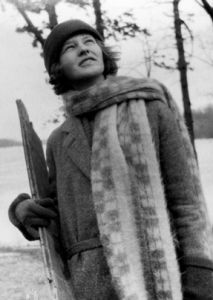 motives. They communicated with a close circle of associates who believed communism and the Soviet Union might be the only possible stumbling block to complete Nazi tyranny in Europe.
motives. They communicated with a close circle of associates who believed communism and the Soviet Union might be the only possible stumbling block to complete Nazi tyranny in Europe.
When Mildred came to the United States for a lecture tour in 1937, her family begged her to relocate permanently, but she refused and resumed her life in Germany. I suppose she thought she could be of better assistance there than in the United States. When war was declared in 1941, she did not leave with other Americans. 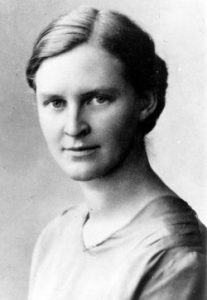 They couldn’t leave, because by then, Mildred and Arvid were involved with a communist espionage network known by the Gestapo as “The Red Orchestra”. The ring, which provided important intelligence to the USSR, was compromised and the members were arrested. I’m sure they knew this was a death sentence for them.
They couldn’t leave, because by then, Mildred and Arvid were involved with a communist espionage network known by the Gestapo as “The Red Orchestra”. The ring, which provided important intelligence to the USSR, was compromised and the members were arrested. I’m sure they knew this was a death sentence for them.
After they were tried as traitors, Arvid was sentenced to death and executed on December 22, 1942. Mildred was given a six year sentence, but Hitler refused to endorse her punishment. As only a dictator can, he insisted on a retrial, after which she was condemned on January 16, 1943. She was beheaded by guillotine at Plotzensee Prison on February 16, 1943. She was the only American female executed on the orders of Adolf Hitler. Because of her connection to possible communist sympathies and post-war McCarthyism, her story is virtually unknown in the United States.
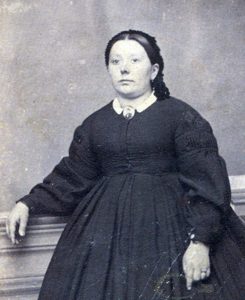
 Every year, as the new year approaches, we take a look at our life and try to think of how we could improve ourselves. Many of us decide that it is time to start a new diet. Every year some new diet shows up. Some people will find something that works for them in the long term, but the reality is that just as often, the new diet doesn’t work, and they set out in search of the next new thing. The reality is that no one diet works for everyone, and dieters sometimes have to try several to see what works for them. It is a fact that has irritated every one of us for years.
Every year, as the new year approaches, we take a look at our life and try to think of how we could improve ourselves. Many of us decide that it is time to start a new diet. Every year some new diet shows up. Some people will find something that works for them in the long term, but the reality is that just as often, the new diet doesn’t work, and they set out in search of the next new thing. The reality is that no one diet works for everyone, and dieters sometimes have to try several to see what works for them. It is a fact that has irritated every one of us for years.
Most people on a diet know that one of the first things to go is the sugar, join a gym, and stubbornly stick to our plan. What we don’t realize is that diets are not a new 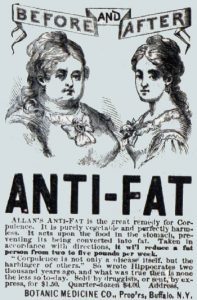 thing. As early as the 18th century, diet doctors began to recommend strict, low fat meals, and newspapers featured adverts for tonic and diet pills. Who would have thought. The idea of beauty changes, and it had changed to a much more slender look.
thing. As early as the 18th century, diet doctors began to recommend strict, low fat meals, and newspapers featured adverts for tonic and diet pills. Who would have thought. The idea of beauty changes, and it had changed to a much more slender look.
Suddenly, attitudes towards over-indulgence, obesity, and body shape were hotly debated, and there developed a pressure to demonstrate self-restraint. Of course, the debates were also about what was a healthy way to eat, and what wasn’t. That debate continues to this day. At one point, a doctor lost weight by cutting fat, and the low-fat craze began. Many people would say that low-fat should not be a craze, but a standard. I won’t “weigh” in on that debate, because we all have our own ideas. Since that time, we have all tried a multitude of diets in an attempt to reach our perfect selves. We can say that some of the new body images would be healthier, and we would be right. Too skinny isn’t healthy, nor is too fat. The argument on that will continue, just as it started in the 18th century…a debate in progress.
 February 14th…a day set aside to celebrate love. There are so many ways to show you love someone. From our very earliest days, we get valentines from our parents, classmates, and even teachers. We learn that this day is different from any other holiday. It’s all about making people happy…and in turn, it comes back around to us.
February 14th…a day set aside to celebrate love. There are so many ways to show you love someone. From our very earliest days, we get valentines from our parents, classmates, and even teachers. We learn that this day is different from any other holiday. It’s all about making people happy…and in turn, it comes back around to us.
Some people like to remain anonymous, like the child who put a valentine in our 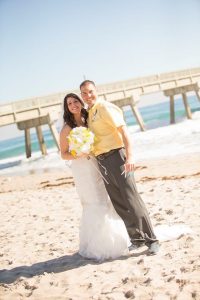 mailbox. The valentine was not signed, nor was it addressed to us, it was simply placed in our mailbox, unseen, when we were not home. It was such a sweet gesture, and it really touched our hearts. The kids in our neighborhood seem to have an extra-strong level of kindness in their DNA, and I find that very sweet. It’s not the first time they have done nice things for the neighborhood. Recently, we caught someone being nice, when we heard a noise on our porch, and looked to see a neighborhood child out shoveling the snow from the neighborhood sidewalks. They didn’t want recognition or money, they just wanted to be nice…and they succeeded in doing just that.
mailbox. The valentine was not signed, nor was it addressed to us, it was simply placed in our mailbox, unseen, when we were not home. It was such a sweet gesture, and it really touched our hearts. The kids in our neighborhood seem to have an extra-strong level of kindness in their DNA, and I find that very sweet. It’s not the first time they have done nice things for the neighborhood. Recently, we caught someone being nice, when we heard a noise on our porch, and looked to see a neighborhood child out shoveling the snow from the neighborhood sidewalks. They didn’t want recognition or money, they just wanted to be nice…and they succeeded in doing just that.
Some people like to show their love for someone by making Valentine’s Day extra special forever. They marry on that day, like my niece Lindsay Moore and her husband, Shannon did six years ago. Now every year, is a special Valentine’s Day for them. Many  people would agree that Valentine’s Day is a very cool wedding day, while others prefer to keep the two days separate. My husband and I fall into the latter category, having married two weeks after Valentine’s Day. Either way, they are special days to show your love for your spouse.
people would agree that Valentine’s Day is a very cool wedding day, while others prefer to keep the two days separate. My husband and I fall into the latter category, having married two weeks after Valentine’s Day. Either way, they are special days to show your love for your spouse.
If you ask me, these days there is nothing better than showing love for people. Everyone needs to feel loved, and we all have times when we don’t feel loved. Sometimes we just need a hug. Show a little love to those around you today. Happy Valentine’s Day!!

 The American prisoners of war had heard the Allied planes pass overhead many times before, but this was different. Along with the sound of the planes, came the howling of Dresden’s air raid sirens. Dresden was known as the “Florence of the Elbe.” The American prisoners of war were moved two stories below into a meat locker. I don’t really understand that in light of the outcome. The Germans didn’t care about their prisoners, but I guess they didn’t care about their own countrymen either. Why would they move their prisoners to a place of safety, but leave the people of the town to fend for themselves. I suppose that they might have wanted the prisoners for leverage, but how good is a victory, if there are no one to live in the town.
The American prisoners of war had heard the Allied planes pass overhead many times before, but this was different. Along with the sound of the planes, came the howling of Dresden’s air raid sirens. Dresden was known as the “Florence of the Elbe.” The American prisoners of war were moved two stories below into a meat locker. I don’t really understand that in light of the outcome. The Germans didn’t care about their prisoners, but I guess they didn’t care about their own countrymen either. Why would they move their prisoners to a place of safety, but leave the people of the town to fend for themselves. I suppose that they might have wanted the prisoners for leverage, but how good is a victory, if there are no one to live in the town.
In this instance, I suppose it didn’t matter, because when the prisoners were brought back to the surface, “the city was gone”…levelled by the bombs from the RAF and the USAAF. One prisoner, Kurt Vonnegut who was a writer and social critic, recalled the scene…shocked. The devastation was unbelievable, the bombing had reduced the “Florence of the Elbe” to rubble and flames. Still, Vonnegut could not help but be thankful that he was still alive. Who wouldn’t be thankful. He was alive, and he would be forever thankful. Who wouldn’t be. It was a second chance.
The devastating, three-day Allied bombing attack on Dresden from February 13 to 15, 1945 in the final months of World War II became one of the most controversial Allied actions of the war. Some 2,700 tons of explosives and incendiaries were dropped by 800-bomber raid and decimated the German city.
Dresden was a major center for Nazi Germany’s rail and road network. The plan was to destroy the city, and thereby overwhelm German authorities and services, and clog all transportation routes with hordes of refugees. An estimated 22,700 to 25,000 people were killed, in the attacks. Normally, Dresden had 550,000 citizens, but at the time there were approximately 600,000 refugees too. The Nazis tried to say that 550,000 had been killed, but that number was quickly proven wrong.

The Allied assault came a less than a month after 19,000 US troops were killed in Germany’s last-ditch offensive at the Battle of the Bulge, and three weeks after the grim discovery of the atrocities committed by Nazi forces at Auschwitz. In an effort to force a surrender, the Dresden bombing was intended to terrorize the civilian population locally and nationwide. It certainly had that effect in 1945.
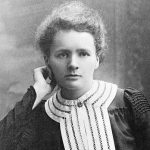
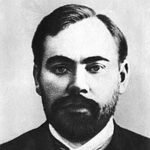 Scientists have done much for mankind. They are dedicated to finding a solution, a cure, a way, often sacrificing their own time, family life, and sometimes even their own life, to solve a problem, find a cure, or make things better. It seems a strange thing to give one’s life for an experiment, and yet people have done just that.
Scientists have done much for mankind. They are dedicated to finding a solution, a cure, a way, often sacrificing their own time, family life, and sometimes even their own life, to solve a problem, find a cure, or make things better. It seems a strange thing to give one’s life for an experiment, and yet people have done just that.
Marie Curie conducted pioneering research on radioactivity, and the discovery of two elements, polonium and radium. Unfortunately, she would die of aplastic anemia, a disease of the bone marrow that was very likely caused by the radioactivity she had been exposed for so many years.
Alexander Bogdanov was obsessed with Hematology. Bogdanov did research in blood transfusions in the 1920s. In fact, he gave himself blood transfusions…over and over. He insisted that the transfusions made him feel better. Maybe they did, but they would also be his undoing, when he transfused himself with the blood of a student who had malaria. Bogdanov contracted the disease and died.
Many people have heard of David Johnston who was a volcanologist. He wanted to see Mount Saint Helens for himself. He was the first to report and urge the evacuation, but seeing the show cost him his life too. He was killed by the Pyroclastic Blast.
Probably one of the most awful deaths to me was that of Harold Maxwell-Lefroy. He spent a lot of time studying bugs, or rather how to get rid of them. He knew that something needed to be done to get rid of these pests. He 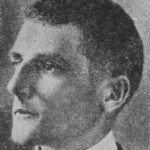
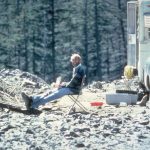 was very good at his work, but unfortunately, the chemicals would kill people too, and he inhaled enough to do so. In his lab, he inhaled a lethal amount of Lewisite.
was very good at his work, but unfortunately, the chemicals would kill people too, and he inhaled enough to do so. In his lab, he inhaled a lethal amount of Lewisite.
There are others, maybe more that anyone knows of. If they weren’t famous or successful, their deaths might have looked like accidents, diseases, accidental overdoses, or even suicide, when in fact they were nothing of the kind. They are just some of the great scientific minds who gave their all in the name of science. Sadly, by accident.
 When we think of space, we picture things floating slowly and peacefully along…or at least I do, but the reality is that most things in space are moving quite fast, and along a specific trajectory. While it seems quite chaotic when you think about all the things that are floating around out there, for the most part, it all moves along in a completely organized manner…for the most part.
When we think of space, we picture things floating slowly and peacefully along…or at least I do, but the reality is that most things in space are moving quite fast, and along a specific trajectory. While it seems quite chaotic when you think about all the things that are floating around out there, for the most part, it all moves along in a completely organized manner…for the most part.
For things in space to change course, there must be something that interferes with the trajectory…a planet that gets in the way, a new piece of space junk that crosses its path, or a satellite that is falling out of orbit. Even with as much “stuff” as exists in space, these are not common occurrences…or at least not as common as you might think. Nevertheless, on February 10, 2009, two communications satellites…the active commercial Iridium 33 and the derelict Russian military Kosmos-2251…accidentally collided at a speed of 26,000 miles per hour and an altitude of 490 miles above the Taymyr Peninsula in Siberia. That speed puts the collision in the hypervelocity category…in fact, very much so. Hypervelocity is very high velocity, listed as 6,700 miles per hour, or more. At 26,000 miles per hour, this collision more than qualified. That kind of speed is shocking…at least in my mind, and the collision must have been horrific. While there had been other collisions in space, this was the first time a hypervelocity collision occurred between two satellites. Prior to that, all accidental hypervelocity collisions had involved a satellite and a piece of space debris.
The collision occurred at 16:56 UTC, which is the time standard commonly used across the world. The world’s timing centers have agreed to keep their time scales closely synchronized, therefore the name Coordinated Universal Time. The collision destroyed both the Iridium 33 and Kosmos-2251. The Iridium satellite was operational at the time of the collision. Kosmos-2251 had gone out of service in 1995. Kosmos-2251 had no propulsion system, and was no longer actively controlled. Had it been actively controlled, they might have guided it out of harm’s way. NASA initially estimated the debris at 1,000 pieces larger than 3.9, and many smaller pieces, but in reality the US Space Surveillance Network had cataloged 2,000 large pieces by July 2011. They thought the International Space Station, which orbits at about 270 miles below the collision course, was safe, but one piece came within 130 yards at one time, making for a tense few hours.
In the days following the first reports of the incident in 2009, a number of reports of phenomena in the US states of Texas, Kentucky, and New Mexico were attributed to debris from the collision. NASA and the United States Strategic Command, which tracks satellites and orbital debris, did not announce that any debris had  entered the atmosphere at the time and reported that these phenomena were unrelated to the collision. Still, things like sonic booms heard by witnesses in Kentucky, on February 13, 2009 made no sense in any other scenario. Then, the National Weather Service issued an information statement alerting residents of sonic booms due to the falling satellite debris. The Federal Aviation Administration also released a notice warning pilots of the re-entering debris. However, some reports include details that point to these phenomena being caused by a meteoroid shower rather than debris. A very bright meteor over Texas on February 15, 2009, was mistaken for re-entering debris. By December 2011, many pieces of the debris were in an observable orbital decay, moving towards Earth, and were expected to burn up in the atmosphere within one to two years. By January 2014, 24% of the known debris orbits had actually decayed. In 2016, Space News listed the collision as the second biggest fragmentation event in history, with Kosmos-2251 and Iridium 33 producing respectively 1,668 and 628 pieces of cataloged debris, of which 1,141 and 364 pieces of tracked debris remain in orbit as of January 2016.
entered the atmosphere at the time and reported that these phenomena were unrelated to the collision. Still, things like sonic booms heard by witnesses in Kentucky, on February 13, 2009 made no sense in any other scenario. Then, the National Weather Service issued an information statement alerting residents of sonic booms due to the falling satellite debris. The Federal Aviation Administration also released a notice warning pilots of the re-entering debris. However, some reports include details that point to these phenomena being caused by a meteoroid shower rather than debris. A very bright meteor over Texas on February 15, 2009, was mistaken for re-entering debris. By December 2011, many pieces of the debris were in an observable orbital decay, moving towards Earth, and were expected to burn up in the atmosphere within one to two years. By January 2014, 24% of the known debris orbits had actually decayed. In 2016, Space News listed the collision as the second biggest fragmentation event in history, with Kosmos-2251 and Iridium 33 producing respectively 1,668 and 628 pieces of cataloged debris, of which 1,141 and 364 pieces of tracked debris remain in orbit as of January 2016.
Contrary to what was expected, a small piece of Kosmos-2251 satellite debris safely passed by the International Space Station at 2:38 am EDT, Saturday, March 24, 2012, at a distance of just 130 yards. As a precaution, ISS management had the six crew members on board the orbiting complex take refuge inside the two docked Soyuz rendezvous spacecraft until the debris had passed. It was a tense time…not knowing if the debris would hit them or miss them. It is not unusual to see two satellites approach within several miles of each other. In fact, these events occur numerous times each day. It’s a challenge to sort through the large number of potential collisions to identify those that are of higher risk. Precise, up-to-date information regarding current satellite positions is difficult to obtain. In fact, the calculations made by CelesTrak had expected these two satellites to miss by 1,916 feet…not a huge distance, but had it been right, it would have been enough.
Planning an avoidance maneuver with due consideration of the risk, the fuel consumption required for the maneuver, and its effects on the satellite’s normal functioning can also be challenging. John Campbell of Iridium spoke at a June 2007 forum discussing these tradeoffs and the difficulty of handling all the notifications they were getting regarding close approaches, which numbered 400 per week for approaches within three miles for  the entire Iridium constellation. He estimated the risk of collision per conjunction as one in 50 million…oops!! That was just a little bit off.
the entire Iridium constellation. He estimated the risk of collision per conjunction as one in 50 million…oops!! That was just a little bit off.
This collision and numerous near-misses have renewed calls for mandatory disposal of defunct satellites by deorbiting them, or at the very least, sending them to a graveyard orbit, but no such international law exists at this time. Nevertheless, some countries have adopted such a law domestically, such as France in December 2010. The United States Federal Communications Commission requires all geostationary satellites launched after March 18, 2002, to commit to moving to a graveyard orbit at the end of their operational life. It’s a start.

 My sister, Allyn Hadlock and her husband, Chris recently inherited the land his parents had owned, and the home where Chris grew up. The house was old, and had to be torn down, but they built a beautiful new home in its place. The move was a dream come true for Chris, to live in his childhood home again after his parents passed, but while my sister loved her in-laws very much, I was still surprised to see the joyous transformation that occurred in her when they began the work. Allyn has always been all about family, and she loved her in-laws very much, but this was different. It was like she became a kid again, just like Chris had done at the prospect of living in his childhood home again. They really love it out there in the country, by the river. It’s peaceful and they have plenty of space for the kids to run around and have fun.
My sister, Allyn Hadlock and her husband, Chris recently inherited the land his parents had owned, and the home where Chris grew up. The house was old, and had to be torn down, but they built a beautiful new home in its place. The move was a dream come true for Chris, to live in his childhood home again after his parents passed, but while my sister loved her in-laws very much, I was still surprised to see the joyous transformation that occurred in her when they began the work. Allyn has always been all about family, and she loved her in-laws very much, but this was different. It was like she became a kid again, just like Chris had done at the prospect of living in his childhood home again. They really love it out there in the country, by the river. It’s peaceful and they have plenty of space for the kids to run around and have fun.
The home is done now, and they are living there. The child-like elation has very much continued. At Christmas, 
 they hosted the family Christmas party, and we all had a great time, but it was more than that. Recently, they had a gathering of their family at the house, and the reality hit me. They had started their second childhood. With the recent snows, and the perfect sledding hill right in their back yard. Having the kids out to go sledding is a pretty normal activity, but the grandparents don’t always get out there to go sledding with the kids. Still, its not like my sister and her husband are…old. She is seven years younger than I am, and my husband, Bob and I love to hike…some pretty difficult trails. That said, while physically, I could go sledding, I’ve never particularly been a snow and cold kind of person, so sledding is not an activity that is on my radar, but it apparently is something that is on their radar, and they truly love doing it. That’s obvious.
they hosted the family Christmas party, and we all had a great time, but it was more than that. Recently, they had a gathering of their family at the house, and the reality hit me. They had started their second childhood. With the recent snows, and the perfect sledding hill right in their back yard. Having the kids out to go sledding is a pretty normal activity, but the grandparents don’t always get out there to go sledding with the kids. Still, its not like my sister and her husband are…old. She is seven years younger than I am, and my husband, Bob and I love to hike…some pretty difficult trails. That said, while physically, I could go sledding, I’ve never particularly been a snow and cold kind of person, so sledding is not an activity that is on my radar, but it apparently is something that is on their radar, and they truly love doing it. That’s obvious.
Nevertheless, for my sister and her husband, who have a number of smaller grandchildren, it was the perfect kind of day. Looking at all the pictures my nieces, Jessi Sawdon and Kellie Hadlock took, and the stories they told, I could clearly see that the day was very special to all of them. My sister is all about her family. She is a 
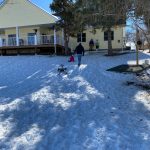 wonderful mom and grandma, as well as a wonderful wife to Chris. They have a great place now, out in the country with a great hill to sled on and the river nearby for summer fun. It is a dream come true for both of them, and I am very happy they have this place, I also know that Chris’ parents would be thrilled to see their home continue to be home to their family. They would love that the children are back running around the place having the time of their lives. And I think they would be smiling. Today is Allyn’s birthday. Happy birthday Allyn!! Have a great day!! We love you!!
wonderful mom and grandma, as well as a wonderful wife to Chris. They have a great place now, out in the country with a great hill to sled on and the river nearby for summer fun. It is a dream come true for both of them, and I am very happy they have this place, I also know that Chris’ parents would be thrilled to see their home continue to be home to their family. They would love that the children are back running around the place having the time of their lives. And I think they would be smiling. Today is Allyn’s birthday. Happy birthday Allyn!! Have a great day!! We love you!!

